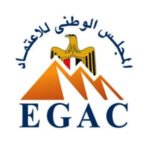
Every B2B marketing team is searching for BANT leads, high-quality prospects that can become real sales opportunities. One of the most popular methods for qualifying these leads is the BANT framework, which stands for Budget, Authority, Need, and Timeline. BANT leads are highly valued in B2B because they are more likely to have a genuine interest in your products or services, the necessary resources, decision-making authority, and a clear purchase plan.
In this guide, we’ll break down BANT leads, why they’re essential for B2B marketers, and how you can generate and qualify them to fuel your business growth.

The main difference between BANT leads and regular leads lies in their qualifications. While ordinary lead targeting may rely on primary factors like industry, past behavior, or demographics, these don’t always show if a lead is ready to buy.
BANT leads, however, are prospects who meet specific criteria:
BANT leads are essential because they are further along in the buying process, making them more likely to convert into sales than general leads.
While BANT leads are considered top-tier, another category is Highly Qualified Leads (HQL). HQLs are leads that show strong interest in your offerings but may not meet all BANT criteria.
The main difference is that BANT leads are more thoroughly vetted and ready to buy, while HQL leads may still need some nurturing before they’re prepared to commit. Both are valuable, but BANT leads usually have a higher conversion rate and are prioritized by sales teams.
A strategic approach is critical to successfully generating BANT leads. Quality should always come before quantity when it comes to lead generation.
Once you’ve identified BANT leads, it’s important to nurture them through the sales process. Here are some ways to keep them engaged:
Using the BANT lead qualification technique can help you pinpoint and rank notch leads in your B2C marketing plan effectively. The key is to concentrate on leads that match the Budget, action, Tendency, and time frame standards. This approach can boost conversion rates, hasten the sales process, and boost revenue for your company. When paired with clever lead generation strategies and nurturing BANT leads, they have the potential to revolutionize your B2B sales endeavors.
By integrating this structure into your plan guarantees that you target the prospects when they are most receptive to your message—resulting in increased sales and accelerated expansion.

